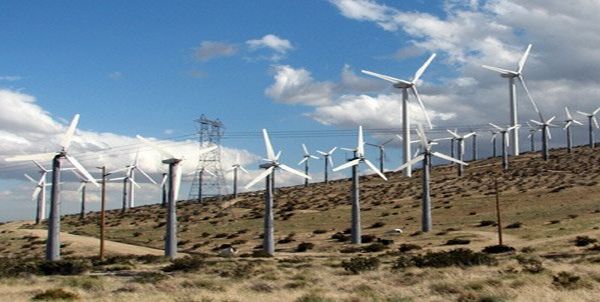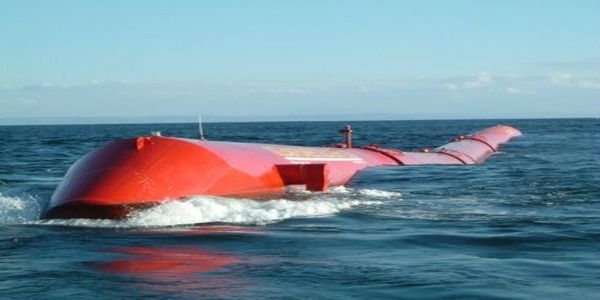
The whole advanced state of the conventional technological domain driving our world has reached the threshold of saturation (with limitation of resources and effects of pollution). Hence, in relation to this, we have seen a recent spurt of ‘green’ mechanisms (be it in the automotive sector or in the electronic field) that have the potentiality to make their mark in the future. But, then such conceptions only allude to the end state, not the means to that convenient end state. Thus a collective and sustainable approach should be taken that can provide large scale solution to our every day primary energy requirements, both domestically and industrially.
This brings us to the commercial adoption of credible alternative energy sources that can fuel our very future existence. So, without further ado, let us have a brief idea about the 10 alternative energy sources that promises a much greener planet for our children.
1. Tidal Power

As the name suggests, tidal power can be generated from the kinetic motion of high tides in ocean and sea locations. The ebbing and surging pattern of tides produces a kinetic energy that can be harvested by under water turbines, to be converted to clean electrical energy. Since oceans cover a massive part of our earth surface, this sustainable source has a great potential to be utilized in the near future.
2. Wave power

While tidal power entails an underwater mechanism, harnessing of wave power requires a ‘floating’ system above the surface of water. These generators along the fluid facade utilize the wave motion of the water (determined by wave height, wave speed, wavelength, and water density) to produce electricity. The resultant power in turn can be supplied to water oriented industrial setups such as desalination plants and power plants.
3. Solar power

One of the well known sources of renewable energy, solar power can have a multitude of applications due the nigh inexhaustible capacity of sunlight. In essence the light energy of the sunlight is converted to electricity by mechanisms such as photovoltaic cells or concentrated solar power (focusing a large swathe of sunlight into a small beam). According to present estimates, solar power accounts for 43 GW of power capacity around the world.
4. Wind power

Wind power generation entails the conversion of natural wind energy into electricity by the mechanical prowess of wind turbines. The rotatory motion of the turbine blades from the wind initiates the conversion process. Wind power accounts for 194 GW of nameplate capacity (which is the greatest among renewable sources), with energy production at 430 TWh, which is about 2.5% of worldwide electricity usage.
5. Hydroelectricity

The basic system of a hydroelectric plant utilizes the downward flow of a mass of water for energy generation. This massive magnitude of potential energy contained in the water (at an upper level) is converted to mechanical energy by use of in-built turbines. This resultant mechanical outcome is then converted to ‘clean and green’ electricity. Huge facilities like dams and barrages are generally used for such gargantuan scale of operations. As a matter of fact, hydroelectricity remains one of the three principal sources of electricity around the world.
6. Radiant Energy

A relative unknown facet of energy source discovered by Nikola Tesla, radiant energy is the energy available from electromagnetic waves. This field encompasses a wide variety of systems that work on an intangible yet open level, especially in relation to human senses. The primary form of radiant energy is produced in the sun from the effects of nuclear fusion, and the related systems can include heating mechanisms utilizing infrared waves to normal sunlight.
7. Geothermal Power

Geothermal power is harnessed from the effects of the omnipresent heat (around 6000 degrees Celsius) at the central core of our earth system. This massive magnitude of inner earth’s thermal energy sometimes makes its presence felt through tectonic plates, in the form of volcanic outlets and hot springs. This unobtrusive heat in turn can be used for production of electricity as well as heating facilities.
8. Biomass

Biomass is carbon, hydrogen and oxygen based renewable energy source that is derived from organic materials. This plant or animal matter can be directly converted to heat energy by combustion, or can be utilized as an alternative fuel by various chemical procedures. Components like wood, sugarcane and corn are examples of biomass sources. According to recent estimations, biomass and waste-to-energy plants accounts for 65 GW of energy capacity around the world.
9. Compressed Natural Gas

Compressed natural gas (CNG) is a form of fossil fuel that can be considered as a substitute for other conventional fossil fuels such as petrol, diesel and LPG. This comparatively environmental friendly fuel is derived by compressing natural gas (with methane as its main constituent) to 1 percent of its standard volume. Being also relatively cheaper than petrol, its usage is righteously becoming more widespread in third world countries.




